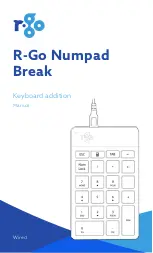
Section 12 — Sequencer and Audio Track Concepts
ASR-10 Musician’s Manual
52
About Audio Tracks
System Optimization Tips
Application Notes to Improve Performance:
Note that these are not required, but may improve situations where system bandwidth is being
limited by excess SCSI activity:
• Mute the first Audio Track before recording the second. This will cut down on disk activity
during record.
• When recording from the start of a sequence, record with a countoff. This allows one bar of
countoff time to verify recording files exist, instead of having to do this verification in real-time.
• When Audio Track recording, mute unneeded sequence tracks.
• Record Audio Tracks with a minimum timing reference, then copy over sequence tracks from
another sequence (or copy Audio Tracks over to the other sequence).
• Mute Audio Tracks before recording sequence tracks.
• For Audio Track bounce-down (assuming you’re bouncing-down Audio Track playback only,
and not sequence playback), set the SCSI ACCESS SPEED as high as possible. Sequencer track
playback may be compromised, but the AudioSamples will play back smoothly, and since this
what you are re-recording, the bounced-down data should be fine. Again, mute the sequence
tracks here, as well.
• For 2-track playback, SCSI storage devices that were recently formatted will perform better
than a SCSI storage device that had a lot of data on it prior to Audio Track recording. This is
true even if the SCSI storage device has been defragmented. This is because data that resides
on the outer edges of the SCSI storage device will reduce the disk head movement.
• The SCSI storage device manufacturer’s access times do NOT tell the whole story. Some SCSI
storage devices use highly intelligent caching schemes to greatly reduce the amount of disk
activity for the same amount of data transferred. Some SCSI storage devices have fast seek
times, but slow SCSI transfer times. Drives with segmented caches work much better for
multiple Audio Tracks.
• Some SCSI storage devices will time out after several minutes of no use. This puts the SCSI
storage device into an idle state. The first request to the SCSI storage device while it is in this
state takes longer to process because the motor may not be up to full speed. If you try to go
into record, this may result in a MEMORY OVERFLOW message. If you go into play, this
may result in a SCSI ACCESS TOO SLOW message. Subsequent SCSI storage device activity
is then fine. To get around the idle state, simply reselect the sequence and prepare it (press
Enter•Yes). This will wake the SCSI storage device up so the first real-time playback SCSI
transfer will be on time.
• Audio Tracks recording or playing back at 44.1KHz require much more SCSI activity than the
same sequence at 30KHz. If the MEMORY OVERFLOW message occurs during recording at
44.1KHz, you may be successful recording at 30KHz. Again, this is all dependent on what
type of SCSI storage device is at the other end of the SCSI cable.
• Follow all cabling tips in the SP-3 SCSI Manual, making the shortest possible path between the
ASR-10 and the SCSI storage device selected with the CONFIGURE AUDIO TRACKS
command, REC SCSI DRIVE parameter.
AudioSample Specs
• Each SONG + ALL SEQS (Project) file can have a maximum of 8192 AudioSamples.
• The map of contiguous blocks will allow approximately 500 fragments per sequence or song. So
if all AudioSamples were contiguous, this would allow up to 500 AudioSamples per sequence or
song. If each file consisted of two fragments, you could have up to 250 AudioSamples per
sequence or song (fragmentation is entirely dependent on the data already on the disk).
• Time limits per AudioSample (worst case): 80.1 minutes at 29.7KHz; 54.1 minutes at 44.1KHz.
















































